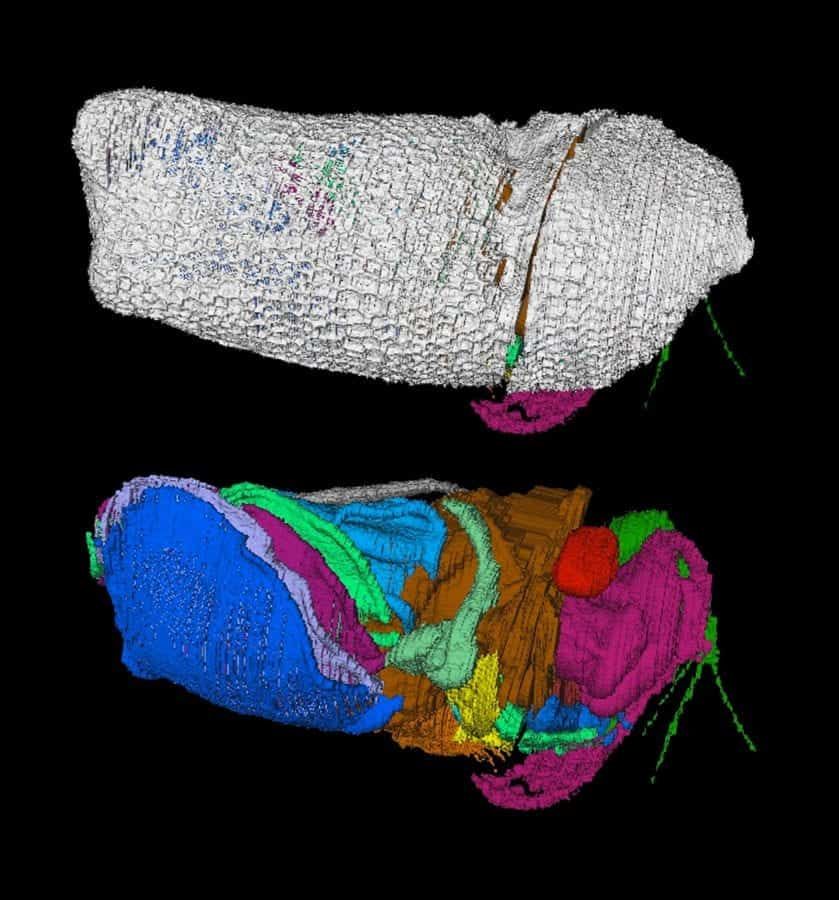The world’s oldest respiratory system has been unearthed in Herefordshire… in a 430 million year old shellfish.
It has been named the ‘Breath of Life’ by the British led team of international scientists who discovered it.
The tiny fossil, just a few millimetres long, contains the remains of an aquatic marine animal called an ostracod.
It is so well preserved that the creature’s hard shell, limbs, eyes, gut and gills can still be made out in exquisite detail.
The respiratory system includes five pairs of gills with canals that in life conveyed essential fluids.
This implies a heart had likely evolved in representatives of this common group of micro-crustaceans by this time, much earlier than previously believed.

The conventional viewpoint is the first terrestrial life migrated out of the water about 430 million years ago, in the midst of a period known as the ‘Cambrian Explosion of Life’.
This has been dubbed the “evolutionary heyday” when favourable conditions allowed life to swell and branch into most of the major forms in existence today.
The discovery is unique because the soft-parts are normally destroyed during the harsh fossilisation process.
It is completely new to science and has been named Spiricopia aurita, from the Latin for ‘breath of life.
The crustacean is a distant relative of lobsters, shrimps and crabs. There are about 40,000 crustacean species known today.
Lead author Professor David Siveter, a geologist at the University of Leicester, said: “This is an exciting and rare find, in which the soft parts of the animal are preserved as well as its shell.
“In almost all cases such fleshy structures are denied to the fossil record.
“It gives us a tantalising window into the palaeobiology of the animal and here yields knowledge about important organ-systems and associated metabolic activities in what is a widespread group of fossil and living arthropods.”
It sheds fresh light on the evolution of the body plan, limbs and the respiratory and circulatory system.
S aurita lived in a sea that covered much of southern Britain and beyond during the Silurian period – about 443 to 420 million years ago.
At this time much of southern Britain was positioned in warm southerly subtropical latitudes, quite close to a large ancient continent of what we now call North America. It was covered by a shallow sea.
The crustacean and other animals living there died and were preserved when a fine volcanic ash rained down, entombing them in what is now Herefordshire in the Welsh Borders.
They were fossilised and preserved intact within hard calcareous nodules. Ostracods are a kind of minute shrimp and have been around for at least 500 million years.
The fossil described in the Royal Society journal Biology Letters was recovered from its host rock using a digital reconstruction technique.
It involved grinding down the actual fossil and rock, layer by wafer-thin layer, and then producing a virtual 3D replica on a computer.
Prof Siveter made the discovery working alongside researchers from Oxford University, Imperial College London and Yale University in the United States.

